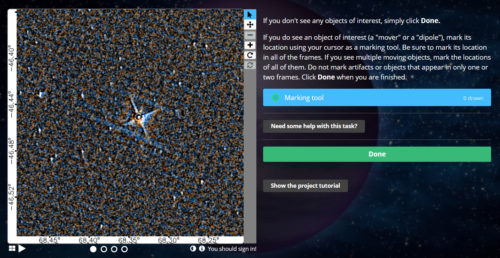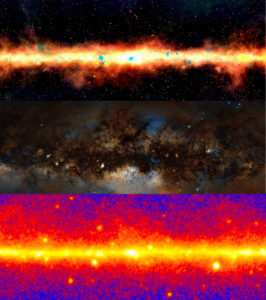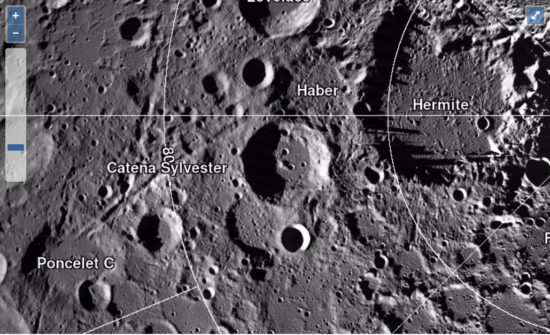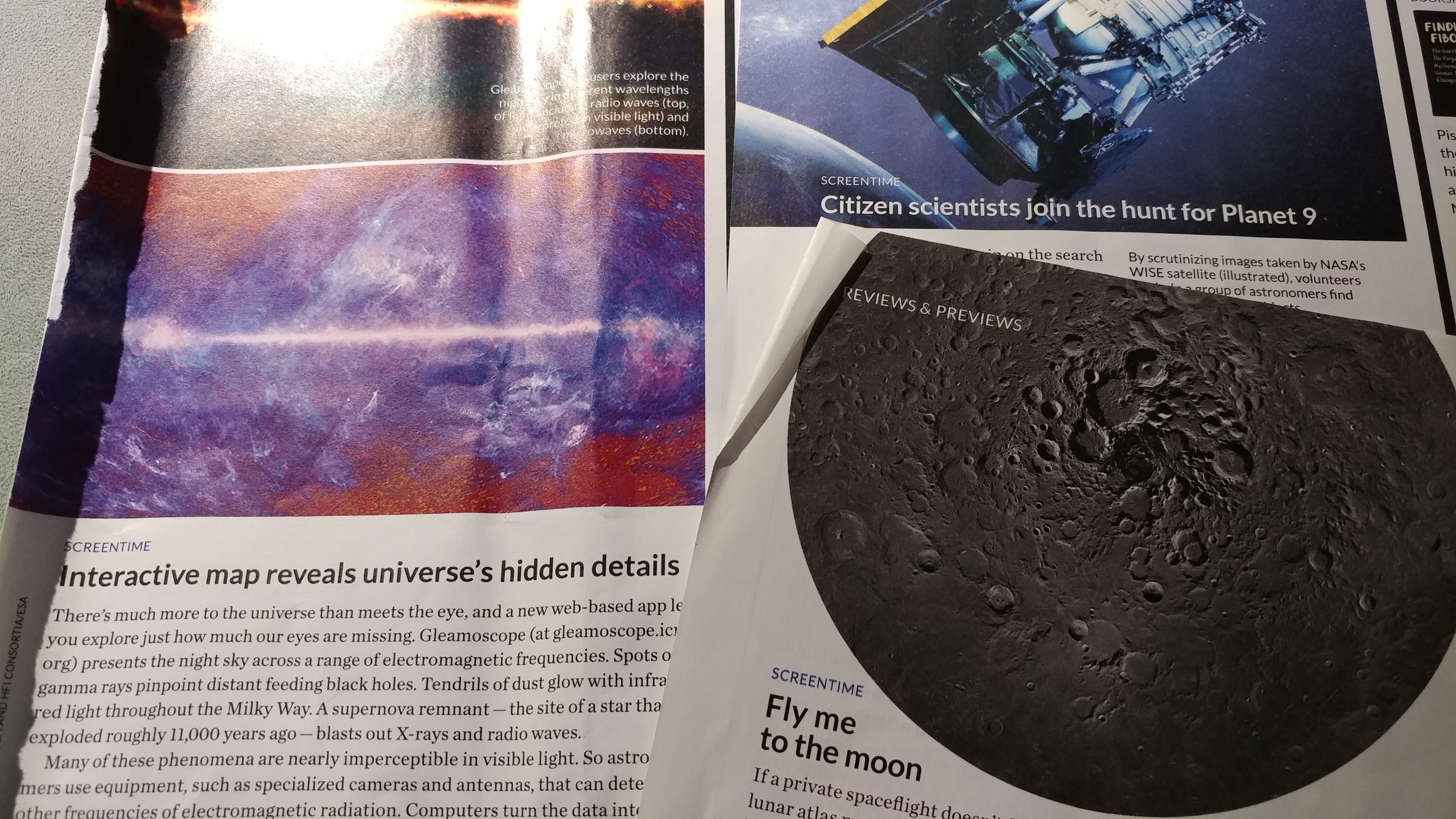I marked several articles in past issues of Science News Magazine that have to do with free, interactive, online tools that any amateur or professional astronomer can use. Below are three online sites that provide interesting looks at the moon and the universe, and one that can even allow you to be the next person to discover a planet!
Hunting For Planet 9 with Backyard Worlds

Join in on the search for a proposed planet dubbed Planet 9! With an existence hinted from its gravitational influence on our other planets, Planet 9 may have already been photographed and is waiting for someone to point it out. The Backyard Worlds project lets space lovers flip through images taken by NASA’s Wide-field Infrared Survey Explorer satellite (WISE). The images are from a small area of interest where predictions point.
Backyard Worlds uses the millions of images taken several times in the same area of the sky over time. The goal is to click through four images at a time of the same area of sky. When an “area of interest” appears to have changed positions over two or three of the images, the area is marked and submitted to the team of volunteer astronomers who then take a closer look. When an object is one that was not previously marked and warrants further study, telescope time is arranged to take a closer look.
For more information, visit Backyard Worlds, or read the June 10, 2017 Science News article about the project.
Gleamoscope Shows Universe That Human Eyes Can’t See

Many of the most spectacular phenomena in the universe occurs in ways that are barely perceptible in the visible light that our eyes can see. The Gleamoscope app, available both online and via an Android app, provides a way for us to view the universe in a range of frequencies to see the familiar night sky in new ways. The site’s smooth slider has settings for visible, Gamma Ray, X-ray, Far Infrared, and Microwave views of the universe.
Celestial objects radiate energy of various wavelengths. Only a tiny band of wavelengths are visible light that our eyes can perceive – the bulk of the wavelengths are at frequencies that can be picked up by special radio or infrared telescopes. The Gleamoscope interactive map of the universe uses images from many observatories and radio antennas and provides a fun way to “see” the universe in a new way.
Learn more at the Gleamoscope site and in the November 26, 2016 Science News article.
High-Res Lunar Map Takes Us To the Moon

Fly to the moon from the comfort of your couch using NASA’s interactive lunar atlas. Thousands of high-resolution black and white images of the moon’s poles were snapped by the NASA’s Lunar Reconnaissance Orbiter Camera (LROC). The robotic spacecraft orbits the moon at an orbit of 50-200 kilometers (31 to 124 miles) to provide images with a resolution down to 2 meters.
The lunar atlas has familiar zoom and pan functionality for easy navigation of the moon’s surface. When you see something interesting, zoom in and in and in to get an up-close look with stunning clarity – no spacesuit necessary! Learn about LROC and check out the lunar map online at http://lroc.sese.asu.edu/images/gigapan/. (Science News article from May 3, 2014)


